Updated: Sunday, 18 Jan 2015 15:27 | Comments
By Barry McEneaney
The big four's hegemony of the game's Grand Slam events came to an end a year ago as Stan Wawrinka ended a decade of dominance for Novak Djokovic and Roger Federer at Melbourne Park.
Djokovic was bidding for a fourth consecutive Australian Open title, and a fifth in total, before being shocked by Switzerland's second best player at the quarter-final stage.
Federer won the first of his four majors Down Under in 2004, with Marat Safin and Rafael Nadal the only players to get their names etched on the Norman Brookes Challenge Cup before the Serbian started on his antipodean streak.
An eighth seed landing a title in many other sports wouldn't be regarded as a surprise, but with Djokovic, Federer, Nadal and Andy Murray having monopolised the previous five Australian Open finals, Wawrinka started an unconsidered 50-1+ shot.
Normal service appeared to have been resumed when Nadal defeated Djokovic at the French Open to retain his mantle as the King of Clay, while Djokovic's narrow defeat of Federer at Wimbledon gave some more credence to the view that the Australian Open result was merely a rare aberration in the record of the established elite four in the men's game.
However, the US Open confirmed 2014 as a breakout year for the chasing pack as Marin Cilic defeated Kei Nishikori in the final.
The chasm between the established elite and those trying to topple the cartel had to be bridged eventually, Father Time was always going to see to that, but it remains to be seen if last year's results in the majors heralded an irreversible shift in momentum from the old to the new.
Number one seed Novak Djokovic arrived in Melbourne 12 months ago as the favourite to win a fifth Australian Open title, which would have seen him move clear of Andre Agassi and Roger Federer and set a record for the Open era.
Having reached the quarter-finals without dropping a single set, the Serbian suffered just his third defeat in 18 meetings - and a first since 2006 - against Stan Wawrinka in a five-set epic.
Djokovic dropped just two sets en route to the final of the French Open in May. His imperious form at Roland Garros, and the fact that the then world number two had enjoyed victory over Nadal in the final of the preceding Rome Masters, saw him touted as the man with the best prospects of toppling the Pearl of Manacor in a French Open final. However, the Spaniard went on to prevail in four sets.
The Serbian regained his world number one ranking from Nadal with a five-set victory over Roger Federer at Wimbledon as he claimed a second title at SW19, but suffered a semi-final exit at the US Open as Kei Nishikori ended his hopes of winning the final major of the season.
Djokovic did manage to finish the season strongly, winning titles in Beijing and Paris before blitzing his opponents to progress to the final of the season-ending World Tour Finals in London, where he lifted the title after Federer was forced to withdraw from the decider with a back injury.
Having kicked off this season at an exhibition in Abu Dhabi, where he drubbed Wawrinka before withdrawing from a final against Andy Murray due to illness, Djokovic headed to Doha where he was eliminated by the big-serving Croatian Ivo Karlovic at the quarter-final stage. That narrow defeat wasn't quite the shock both players' ranking would imply, as it came in blustery conditions - something the flat-hitting Djokovic has always struggled with - and the Karlovic serve is almost unbreakable when functioning at its best.
The air of invincibility that surrounded Djokovic during his annus mirabilis in 2011 may be gone, but the sheer consistency of his all-round game, allied to his incredible court coverage, still makes him the man to beat at any major held outside of Paris.
The 27-year-old continues to boast the best combined service hold and break percentages on hard court surfaces, and he looks poised to take advantage of a kind draw.
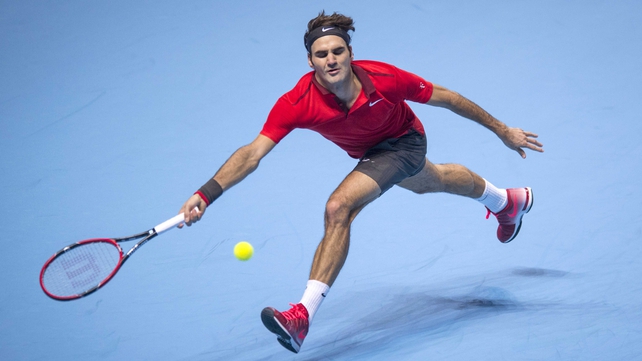
If the end of the big four's stranglehold on the majors was the story of 2014, Roger Federer's resurgence was a close second.
The quest for an 18th major eluded the Swiss maestro, but it was a vastly more successful year than the one he'd endured in 2013.
Federer returned to number two in the world rankings in a campaign which saw him reach the semi-finals of both the Australian Open and the US Open, while it took a deciding fifth set to deny him an unprecedented eighth Wimbledon crown.
His defeat to the mercurial Ernests Gulbis in the fourth round of the French Open was an upset, but hardly a major one when you factor in the Latvian's rich vein of form entering the tournament and a head-to-head record which saw him win one of their three tight previous encounters.
Federer finished the season with five titles in total, including two Masters crowns at Cincinnati and Shanghai - his first at that level since 2012.
A back injury prevented him from contesting the final of the World Tour Finals, but the year was to finish on a high as Switzerland claimed a first-ever Davis Cup title.
Two decisions appear to have made a huge impact on Federer's fortunes.
An already effortless style has become even more efficient due to a change of racket. The move from a 90 to a 95 square inch racket head has resulted in an increase in the power Federer generates, which has in turn allowed the 33-year-old to shorten his backswing ever so slightly. A more compact style should bring greater consistency in the latter stage of his career, something that was missing during his earlier slump.
The appointment of Stefan Edberg as his coach has also proved to be an inspired one. Federer's game has been imbued with a greater sense of urgency. A more aggressive strategy, while high risk, has resulted in fewer attritional baseline rallies, something that has to be welcomed.
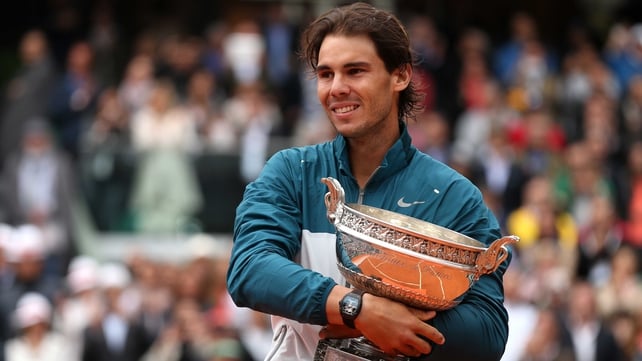
Rafae Nadal returns to the fray after a season ravaged by injury and illness.
His four-set defeat to Stan Wawrinka in last year's final, where he was badly hampered by a back injury, was followed by a patchy run of form which only ended when he reached the red clay of Roland Garros.
Nadal's 3-6 7-5 6-2 6-4 win in the final ensured he got his teeth on the Coupe des Mousquetaires for a ninth consecutive year.
An early defeat to Dustin Brown in a warm-up event for Wimbledon at Halle hardly boded well for the lefthander's prospects at the All England Club as he bid to bounce back from ignominious defeats to Lukas Rosol in 2012 and Steve Darcis in 2013. This time around, he managed to reach the fourth round before being stunned by the prodigious talent of 19-year-old Australian wildcard Nick Kyrgios.
A wrist injury meant Nadal missed the US Open for the second time in three years, while his comeback from that injury was to prove short lived as he succumbed to appendicitis, forcing him to miss the World Tour Finals for a third time.
After yet another season truncated by injury, the murmurs surrounding the 28-year-old's longevity in the game are growing louder. He may be five years younger than Federer, but his style of play has unquestionably wreaked greater havoc on his body.
Defeats this year to Andy Murray and the veteran Michael Berrer suggest this tournament may come to soon for the 2009 champion.
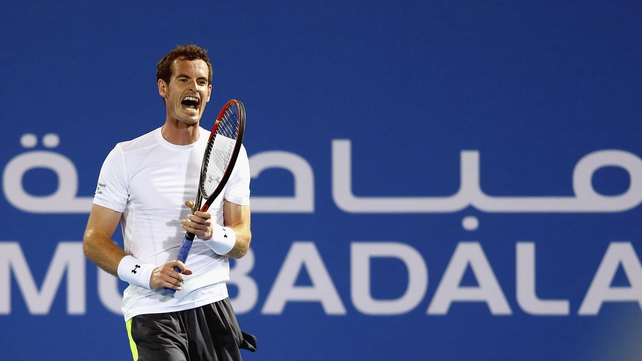
Andy Murray will have been glad to see the back of a tumultuous 2014 which saw him split with coach Ivan Lendl and fail to reach the final of a Grand Slam event for the first time since 2009.
The Scot lost the first four major finals he contested, but the appointment of Lendl for the start of the 2012 season served as a catalyst which spurred Murray on to Olympic glory and a US Open title during the Czech's first season in the role. Britain's 77-year wait for a Wimbledon champion in the men's singles ended a year later as the Dunblane man defeated Novak Djokovic in straight sets. New coach Amelie Mauresomo faces a daunting task to emulate the coaching achievements of Lendl, and she'll have to do so without the assistance of long-time Team Murray stalwarts Dani Vallverdu and Jez Green, who departed from his set-up at the end of the year.
It's impossible to appraise Murray's season without factoring in the impact the back surgery he underwent towards the end of 2013 had on it. The 27-year-old was unable to engage fully in his normal training regime for half the season and that was reflected in his results. However, after dropping out of the top 10 in the rankings, he did finish the year well to rise to number six in the rankings before his year petered out at the World Tour Finals.
Murray, like Rafael Nadal, seems increasingly susceptible to physical ailments, but his results so far in 2015 offer some evidence that one of the game's best counter-punches is returning to his best form.
Defending champion Stan Wawrinka has long been renowned for his cultured one-handed backhand, but his serve and previously unreliable forehand have improved greatly under the tutelage of coach Magnus Norman.
Aside from the improvement Norman helped Warwinka eke out, the nature of the Swiss star's passage to last year's final undoubtedly played a major part in his eventual success.
Winning seven matches in 14 days during the Australian summer takes a monumental physical effort. Wawrinka benefited from a retirement in his opener Down Under and received a walkover ahead of his third round match. The energy saved likely proved crucial, perhaps not in his win over an injured Rafael Nadal in the final, but certainly in his five-set marathon against Novak Djokovic in the quarter-finals.
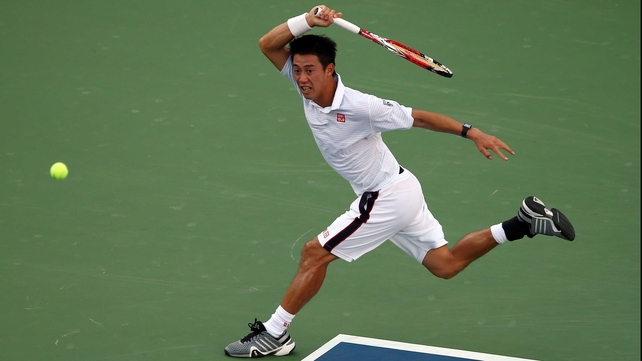
Kei Nishikori's nascent talent finally blossomed in 2014, culminating in his run to the US Open final.
The Japanese player has soared to number five in the rankings after his bold showing in the second half of the season. However, he has shown signs of physical frailty in the past and he will need to improve his serve stats if he is to become the first Asian man to win a Grand Slam event in the Open era.
Tomas Berdych has reached just one Grand Slam final in his career, a poor return for such a talented player. At 29, he's approaching the doors of the last-chance saloon, but the rangy Czech does seem to recognise that major changes have to be made if he's to avoid being remembered as an underachiever. The world number seven has appointed a new coaching team after compatriot Ivan Lendl spurned his earlier advances. Berdych's game may lack the variety needed to win a Grand Slam, but his most obvious failing over the years has been his questionable temperament. If he can finally develop the self-belief needed for Grand Slam glory, he could cause an upset.
Milos Raonic has been touted as a future major winner, but has much work ahead of him to develop his incredibly one-dimensional game.
His serve statistics are impressive, but he simply doesn't create and convert enough break opportunities to trouble the very best players in the latter stages of Grand Slam events. The shortcomings in his return game mean he can easily become embroiled in lengthy matches against inferior opponents. That extra energy expended could catch up with him at the business end of the tournament. Raonic, much like Tomas Berdych, is unfortunate to be playing the game in an era where none of the game's majors are contested on truly fast playing surfaces. Stats related to breaks of serve would imply that Melbourne's Plexicushion surface is marginally slower than the standard ATP hard court surface, negating the benefit a big serve should confer.
David Ferrer began life as a clay-court specialist, but the homogenisation of the game's surface speeds has allowed him to achieve considerable success in hard court events. It's impossible to get to number three in the rankings - as Ferrer did in 2013 - without having weapons in your armoury, but Ferrer's weapons tend towards the non-lethal variety. The Spaniard's return game remains impressive, but the lack of a big serve and powerful groundstrokes make cheap points hard to come by. His relentless style of play relies heavily on athleticism and that could be on the wane as he approaches 33.
Wrist injury sidelined Juan Martin Del Potro for much of 2014 and there have to be major doubts over the 2009 US Open winner's fitness levels heading in to such a stamina-sapping event, even if his wrist can withstand such an arduous schedule so soon after his return.
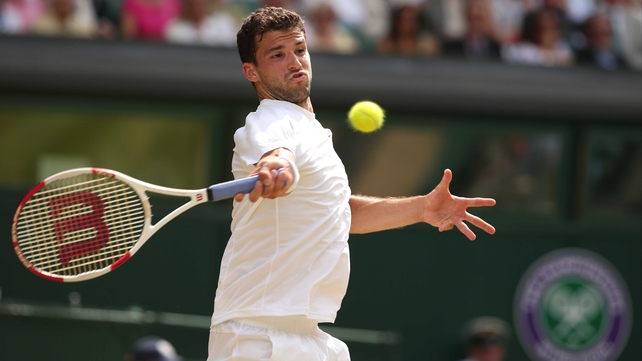
Grigor Dimatrov started to live up to his 'Baby Fed' tag in 2014 as he enjoyed his best year to date and looks the strongest contender of the players born in the 1990s.
Verdict
The big four's utter domination during a golden era for men's tennis may well have come to an end, but Novak Djokovic's superb recent record here gives him a marked advantage over the rest of the field and he can take advantage of a favourable draw.
Roger Federer's chances could well hinge on advancing through the early stages in straight sets and conserving as much energy as possible for the second week of the tournament.
Andy Murray should go well, but may only peak in time for Wimbledon and the US Open, while a rusty Rafael Nadal could be ripe for an early upset.
Kei Nishikori and Tomas Berdych both have the potential to cause upsets if the big guns underperform.
Anda sedang membaca artikel tentang
Australian Open: Men's singles preview
Dengan url
http://olahragaenjoy.blogspot.com/2015/01/australian-open-mens-singles-preview.html
Anda boleh menyebar luaskannya atau mengcopy paste-nya
Australian Open: Men's singles preview
namun jangan lupa untuk meletakkan link
Australian Open: Men's singles preview
sebagai sumbernya
0 komentar:
Posting Komentar